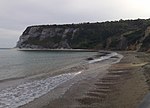Bembridge School

Bembridge School was a British independent school in Bembridge on the Isle of Wight, founded in 1919 by social reformer and Liberal MP John Howard Whitehouse, set in over 100 acres (0.40 km2) on the easternmost tip of the island. Whitehouse intended for the school, initially for boys only, to challenge the traditional concept of education, introducing subjects including woodwork, American history and modern languages, long before they became mainstream subjects in British schools.The school grew from five students at its opening in 1919, to an enrolment of 264 by the time of Whitehouse's death. During the Second World War the site was used as a military base by the Army and the school moved to The Waterhead Hotel in Coniston, close to Brantwood, the former home of John Ruskin, which was owned by the school. The school returned to Bembridge in 1945. The school was founded based on the teachings of John Ruskin, and had a large collection of art, books and memorabilia relating to him, including many notable manuscripts. This collection is now housed in the Ruskin Library at the University of Lancaster. Shortly after the school's 75th anniversary, the Education Trust announced their intention to sell the school, whilst retaining possession of the Ruskin collection.
Excerpt from the Wikipedia article Bembridge School (License: CC BY-SA 3.0, Authors, Images).Bembridge School
Poplar Close,
Geographical coordinates (GPS) Address Nearby Places Show on map
Geographical coordinates (GPS)
| Latitude | Longitude |
|---|---|
| N 50.685 ° | E -1.072 ° |
Address
Poplar Close
PO35 5TE
England, United Kingdom
Open on Google Maps







